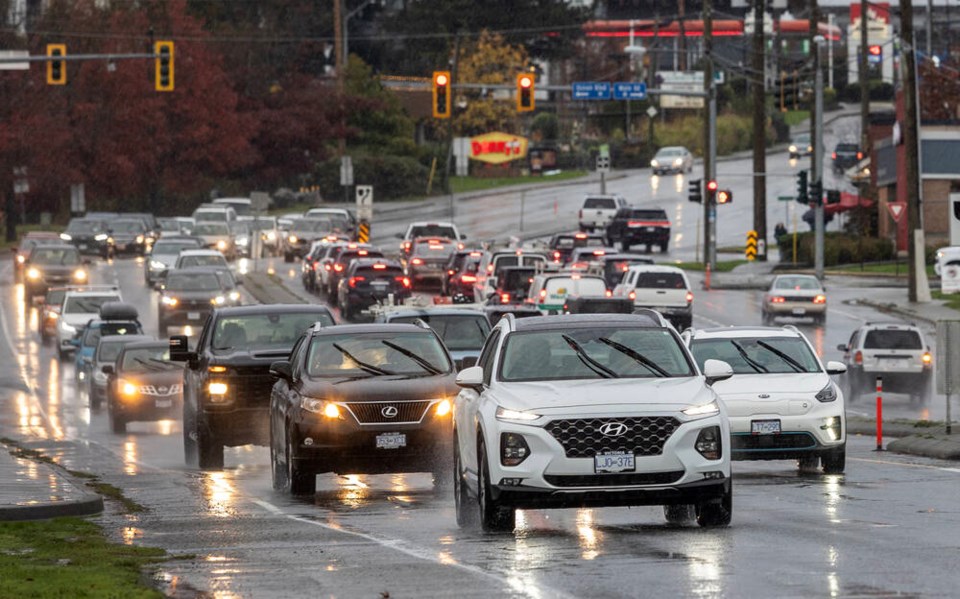The number of vehicles owned in the capital region is up by more than 13,000 since 2018, despite a small dip in 2022, according to statistics from ICBC.
There were 304,068 vehicles owned in the region’s 13 municipalities in 2022, up 4.5 per cent from 290,699 in 2018, based on ICBC’s statistics on vehicle insurance policies in effect.
The numbers steadily increased each year to almost 308,000 in 2021 before dropping.
Langford saw the largest increase, with a jump of more than 4,000 vehicles from 2018 to 2022, while core municipalities saw smaller changes.
The increases are relatively small considering the growth spurt the region has experienced over the past several years, said Ray Straatsma, a lecturer in the University of Victoria’s geography department.
Greater Victoria grew by just under 30,000 residents from 2016 to 2021, an increase of eight per cent.
The drop in 2022 could be an anomaly, he said, and more time — and data — will be needed to see if it is a trend.
It’s possible high vehicle prices played a role in the lower numbers in 2022, Straatsma said, as the average selling price of both new and used vehicles has risen significantly over the past several years.
Another possible factor is a large jump in vehicles with an “unknown” region, meaning the postal code associated with the vehicle is not in ICBC’s system. An ICBC spokesperson said ICBC doesn’t interpret the data and can’t provide an explanation for why the number of “unknown” vehicles roughly doubled from about 60,000 in 2021 to 120,000 in 2022.
Many of the core municipalities have seen very small increases in the number of vehicles over the past several years, pointing to the availability of other transportation options, Straatsma said.
“It does show, I think, people at least starting to consider other options besides the motor vehicle for their purchases and for their trip,” he said.
Todd Litman, executive director of Victoria Transport Policy Institute, said it’s more important to look at how often vehicles are being driven than the number of vehicles in the region.
Litman recently completed a report analyzing statistics compiled by the Capital Regional District that showed car trips in the region declined by 20 per cent per capita since 2017.
Litman studies the costs and benefits of car travel and said while sustainable transportation advocates have long discussed the environmental benefits of reducing trips by car, getting behind the wheel has other impacts to consider, such as adding to traffic congestion and increasing the risk of accidents.
“Every time you drive, you’re expecting the government to pay to build some roads for you — which turns out to be quite costly — and you’re expecting businesses to spend a lot of money to build off-street parking spaces for you,” he said.
Whether or not people own cars is not as important as whether they choose to walk, bike or take transit for local trips and leave driving to longer trips, he said.
Litman’s research shows that reducing the amount of driving in a community makes streets safer. He said for years there’s been a pervasive narrative that car crashes are caused by “special risks,” and that if drivers are sober and cautious and have a well-maintained car, that their driving is safe. That’s been used to justify policies that encourage people to drive, he said.
“We should recognize getting people to drive less is is a legitimate traffic safety strategy,” Litman said.



